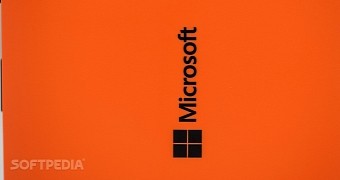Back in 2014, when Satya Nadella replaced Steve Ballmer at the new helm of Microsoft, he pushed the company in a major reorganization process that was supposed to finally help it explore the mobile-first, cloud-first world and provide it with a better opportunity to expand beyond software.
Nadella not only helped Microsoft adopt a more gentleman approach, giving up on some of the projects launched by his predecessor (such as Scroogled), but also put the focus on Windows and cloud, thus trying to concentrate on the products that actually generate more revenue for the company.
After having fired 18,000 people following the Nokia Devices and Services unit, and having reorganized the company to work as “One Microsoft,” Nadella is now getting ready for a new series of changes. Tough changes, as he explained in a letter sent to company employees last week.
But before anything, keep in mind that most of these changes are still in the rumor stage and Microsoft doesn’t want to comment on them. And it’s no wonder why. Nadella needs to plan the company’s transformation closely, and every single bit of information that leaks to the web could affect this plan.
No more Windows Phone?
Recent information coming from people with a good track on early Windows changes suggests that Microsoft could give up on Windows Phone entirely, which was something that some people predicted after Nadella’s mail last week. Windows Phone was one of the products that weren’t even mentioned in Microsoft CEO’s email, and many people rushed to speculate that it was because the mobile OS wasn’t part of future plans.
“Google Play devices in exchange for Maps on Windows 10”
And now, according to new rumors, Windows Phone was indeed out of Microsoft’s long-term vision, but what’s more, they indicate that Redmond could join forces with Google for some sort of never-seen-before collaboration. Microsoft was said to be planning “Google Play devices,” which some believe could mean that Redmond could replace Windows Phone with Android.
Google, in its turn, could bring its products, such as Maps and Gmail, on Windows 10, and thus provide users with desktop access to its key services.
Interested in buying AMD
Also recently, Microsoft has been linked with a potential acquisition of AMD, as the company was looking to expand in the hardware industry.
Basically, rumor has it that Microsoft attempted to build its own chips for devices such as Microsoft Surface, but because the resulting products weren’t exactly what the company expected them to be, it decided to purchase a company that specializes in building hardware to easily expand in this side of the market.
Buying AMD isn’t a financial problem for Microsoft, as Redmond has an operating income of $95.3 billion in cash, while AMD is at approximately $1.81 billion, so it’s pretty clear that, if it really wants to buy the company, the software giant would have no problem doing it.
“Building more hardware would make Microsoft a direct competitor to its own partners”
But then there’s the question of hardware investments. With Surface tablets, Microsoft became a direct competitor to its partners and started fighting for the same buyers with companies that were until then bundling Windows on their devices as part of licensing deals with Redmond. But suddenly, Microsoft started selling devices that were competing with theirs, so it’s no surprise that many were disappointing to see the company going in that direction.
The same could happen if the AMD deal goes through, and there’s no doubt that Nadella needs to plan this strategy in every little detail.
All in all, Microsoft’s transformation continues and the new Microsoft is becoming the newer Microsoft, with the focus now switching to software and services and less on hardware. The next 12 months will be decisive for this strategy, so it remains to be seen if Redmond is indeed prepared to embark on such a new challenging mission.

 14 DAY TRIAL //
14 DAY TRIAL //